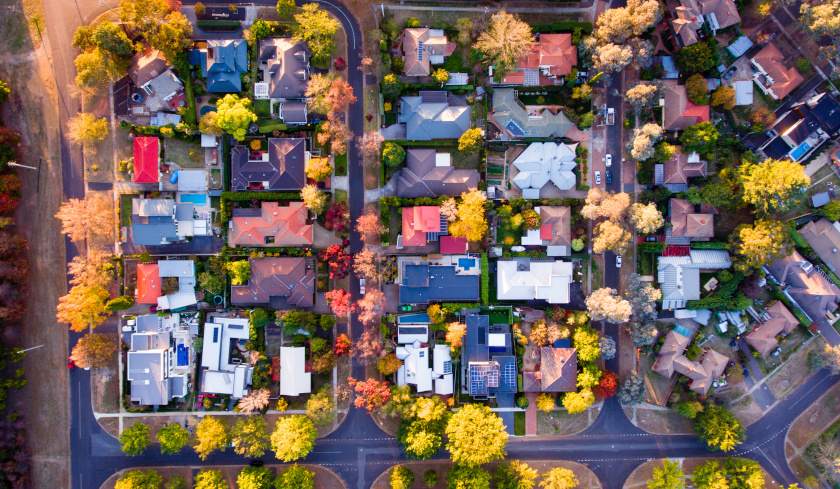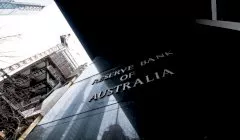Invest
How Australians look at property could be changing
Living in a home you own is the Australian dream, but affordability realities and rental opportunities are reshaping the dream.
How Australians look at property could be changing
Living in a home you own is the Australian dream, but affordability realities and rental opportunities are reshaping the dream.

Nearly four in 10 Australians are renting, with 3 million anticipating they’ll be renting for life, new data from finder.com.au has revealed. The data also found that only 19 per cent of those currently renting are planning to buy property in the near future.
Five per cent of Australians are “rentvesting”, in which they rent in the location they want to live but also own an investment property.
To Wealth Within’s chief analyst, Dale Gillham, rentvesting is his “plan a”.
“Some of the people I meet, I say to them, ‘I don't live in a house that I own’, and they're like, ‘why?’ I can live in a $3 million home, but I don't own it,” he explained.

“I've got an investment property and I'm moving to a $5 million home in the countryside.”
A recent survey from online mortgage marketplace HashChing found that rentvesting is the most stressful way to own property, but Mr Gillham is sanguine.
“A lot of times you can't afford to live where you want to live, but you buy where it's a good investment and then you live where you want to live,” he said.
The countryside property he’s moving into will be paid for through money placed in a trust from the sale of his Melbourne property.
“I'm paying $8,000 a week to live in a $5 million house, eight grand a month for a $5 million home, but I'm still investing. I'm making money elsewhere and the house I'm moving to, half of that I'm going to claim on tax, because I'll run my office out of there and work from there. My business is paying for half my rent,” Mr Gillham said.
He said it comes down to understanding the tax rules in Australia, something the young and the “browbeaten” might not be across.
“All too often, we're just browbeaten by property, property, property and everywhere you go it's all about property, but for young people it should be shares first, because it's so easy to get into,” Mr Gillham said.
Mr Gillham’s words come as the broader market continues to soften, with a recent ANZ-Property Council of Australia survey finding a “negative sentiment” around house price growth in NSW and Victoria.
“So far, falling housing prices and the absence of a wealth effect will weigh on household spending, at least to some extent. So far, however, consumers seem to be weathering the fall in house prices reasonably well,” ANZ head of Australian economics David Plank said.
Various Nest Egg commenters have suggested the softening market will be welcomed by first home buyers, and CoreLogic numbers back this up – finding a “surge” in first home buyer activity has helped support demand across Sydney and Melbourne’s more affordable market segments.
However, this slight softening is unlikely to be enough. The regulatory push to curb investor lending is drawing to an end, with the Australian Prudential Regulation Authority considering its investor lending benchmark has “served its purpose”.
The slowdown in the market has been attributed to weakened investor activity, but easing lending pressures could see this change.
“Lack of access to and secure tenure within affordable housing are significant problems in Australia,” the Australian Housing and Urban Research Institute (AHURI) said in a major report recently.
“There is a consensus that co-ordinated, well-designed reforms to the treatment of housing in the tax and transfer system can make a significant contribution to improving housing outcomes. However, the prospects of achieving significant reform are diminished by formidable political barriers.”
Basically, as independent economist Saul Eslake has put it, it’s a question of “electoral arithmetic”. There are also going to be more home-owners who won’t be impressed by measures to improve housing affordability, given they will also soften their own property values.
However, this may also be changing. Research commissioned by the Australian Institute of Superannuation Trustees released earlier this year found one-third of property investors would in fact support changes to negative gearing, with support highest among those with children, at 45 per cent.
AIST chief executive Eva Scheerlinck said the findings prove housing affordability is a concern to most Australians, including those with an eye on retirement.
A softer approach to investor concessions could be necessary, the AHURI report argued. It said investor discounts need to be reined in, but not wantonly.
AHURI proposed graduated caps on deductions with revenue funnelled into social and affordable housing. In order to address the growing intergenerational inequality, reduced mobility and inflated house prices, the family home would also need to be included in the age pension but with adequate time and provisions to ensure asset rich and income poor pensioners aren’t needlessly hurt.
“When implemented, reforms will contribute to enhancing residential mobility, improving housing accessibility and affordability, reducing incentives for short-term investment in residential property, and improving rental supply and security,” AHURI said.

Property
Retirement communities: a pivotal element in meeting Australia's housing targets
The Retirement Living Council (RLC) has recommended that retirement communities should be considered a vital part in the Australian Government's initiative to fulfill the Housing Australia Future Fund ...Read more

Property
Australians adjust financial strategies amid changing property market dynamics
The 2023 calendar year saw Australian borrowers acquiring a total of $300.9 billion in new loans for property purchases, marking a 12.7% decrease from the previous year. Read more

Property
Split home loans unlocking doors for Aussie buyers
Australians are teaming up to dive into the real estate market and seize the advantages of home ownership, with the trend of split home loans surging as family and friends unite to buy properties ...Read more

Property
Real estate investment: Spotting high-growth potentials
Investing in real estate has long been a favoured approach for Australians looking to grow their wealth. Read more

Property
Granny flats become Aussie families' cost-effective solution to soaring living costs
As the cost of living skyrockets, a forward-thinking trend is sweeping across Australia – granny flats are becoming a favoured living arrangement for older Aussies seeking comfort and proximity to ...Read more

Property
Homebuyers grapple with extended savings period amid affordability crisis
Gone are the days when an Australian dream home seemed just within reach. The path to homeownership in Australia has extended by at least two arduous years, as revealed by the latest insights from ...Read more

Property
Hybrid development unlocks new potential for NDIS housing in metro hotspots
In a ground-breaking strategy aimed at addressing the stark imbalance between the location of Specialist Disability Accommodation (SDA) developments and the actual areas of demand, Aligned Disability ...Read more

Property
Property prices boosted by housing policies: RBA
The central bank has outlined the “pervasive” impact that policy has on property. Read more

Property
Retirement communities: a pivotal element in meeting Australia's housing targets
The Retirement Living Council (RLC) has recommended that retirement communities should be considered a vital part in the Australian Government's initiative to fulfill the Housing Australia Future Fund ...Read more

Property
Australians adjust financial strategies amid changing property market dynamics
The 2023 calendar year saw Australian borrowers acquiring a total of $300.9 billion in new loans for property purchases, marking a 12.7% decrease from the previous year. Read more

Property
Split home loans unlocking doors for Aussie buyers
Australians are teaming up to dive into the real estate market and seize the advantages of home ownership, with the trend of split home loans surging as family and friends unite to buy properties ...Read more

Property
Real estate investment: Spotting high-growth potentials
Investing in real estate has long been a favoured approach for Australians looking to grow their wealth. Read more

Property
Granny flats become Aussie families' cost-effective solution to soaring living costs
As the cost of living skyrockets, a forward-thinking trend is sweeping across Australia – granny flats are becoming a favoured living arrangement for older Aussies seeking comfort and proximity to ...Read more

Property
Homebuyers grapple with extended savings period amid affordability crisis
Gone are the days when an Australian dream home seemed just within reach. The path to homeownership in Australia has extended by at least two arduous years, as revealed by the latest insights from ...Read more

Property
Hybrid development unlocks new potential for NDIS housing in metro hotspots
In a ground-breaking strategy aimed at addressing the stark imbalance between the location of Specialist Disability Accommodation (SDA) developments and the actual areas of demand, Aligned Disability ...Read more

Property
Property prices boosted by housing policies: RBA
The central bank has outlined the “pervasive” impact that policy has on property. Read more






